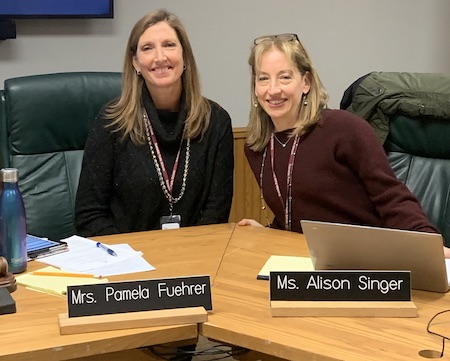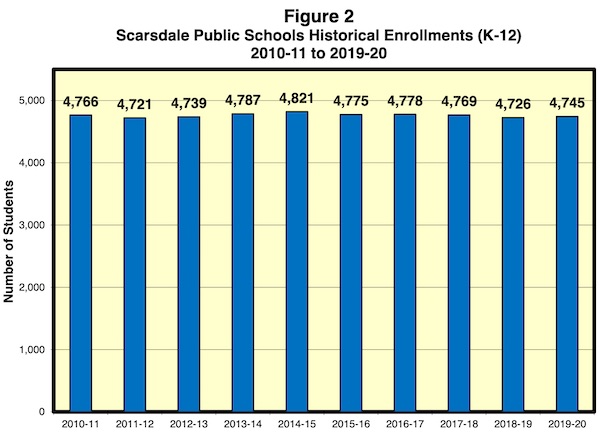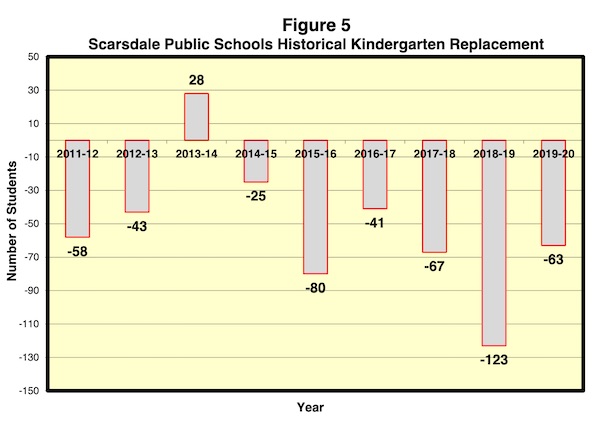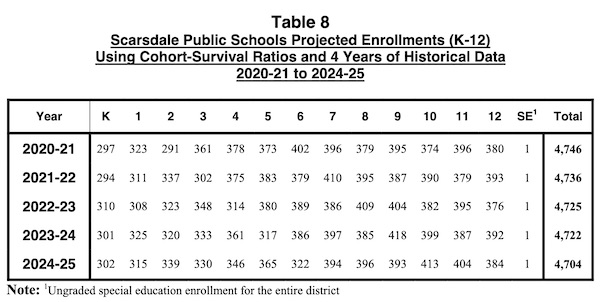New Board Leadership for a New Year -- Plus Budget Numbers, Enrollment Projections and Proposed 20-21 Calendar
- Wednesday, 15 January 2020 09:14
- Last Updated: Wednesday, 15 January 2020 11:02
- Published: Wednesday, 15 January 2020 09:14
- Joanne Wallenstein
- Hits: 6785
 At the first meeting of the Board of Education on January 13, 2020, the Board elected new leadership. Customarily, Board Presidents and Vice Presidents are elected at the end of the school year in July. However last summer, when the Board did their transition planning they recognized that they had three new members starting their terms. As the Board was composed of many “young” members, the Board elected to extend the service of more seasoned members, with Scott Silberfein serving as president and Pam Fuehrer as vice president for an additional six months.
At the first meeting of the Board of Education on January 13, 2020, the Board elected new leadership. Customarily, Board Presidents and Vice Presidents are elected at the end of the school year in July. However last summer, when the Board did their transition planning they recognized that they had three new members starting their terms. As the Board was composed of many “young” members, the Board elected to extend the service of more seasoned members, with Scott Silberfein serving as president and Pam Fuehrer as vice president for an additional six months.
So, now that six months has passed, the Board voted to select Pam Fuehrer as President and Alison Singer as Vice President. They were both elected unanimously and sworn in by Dr. Hagerman.
Here are some highlights of the meeting:
2020-21 School Budget
Ass’t Superintendent Stuart Mattey opened the meeting with an overview of the proposed 2020-21 school budget. The early draft calls for a total budget of $167,078,421 which is a 3.92% budget to budget increase over 2019-20 and would mean a projected tax increase of 3.66%, or $268,118 above the projected tax levy limit.
Staffing and Special Education
In order to begin budgeting for the 2020-21 school year, the administration reviewed current district staffing as well as requests for additional school staff for next year.
This year’s staffing is pretty much on target with the staffing specified in the actual 2019-20 budget. Due to the need for an additional kindergarten section, the budgeted contingency position was used, and staffing is just .7 employees above budget.
Due to increases in the number of students in special education which has grown by 150 students over the past five years, Director of Special Education and Student Services Eric Rauschenbach explained a request for an additional special education co-teacher as special education sections may grow from 13 to 14 classrooms.
He is also proposing that some students who are currently placed out of the district be brought back to the district with the formation of a special class for K-2 students, called 8:1:2. This refers to 8 students, 1 teacher and 2 aides. Rauschenbach said that forming this class would be budget neutral as some of the students who would be served in this class are currently attending out-of-district schools at a cost of $65,000 a year. If there is capacity, students from other districts could pay tuition to attend. He explained, “10% of students are special needs – up from 7% four to five years ago. We are being forward in trying to bring kids back into the district.”
In a discussion of the proposal, Board Member Alison Singer said, “This will enable more students who live in the district to benefit from a Scarsdale education.”
Rauschenbach also made a request for a part-time secretary for the school psychologist at the middle school. The staffer would do clerical work, schedule appointments, track students and greet people in the office when the psychologist is behind closed doors.
Discussing overall staffing for 2020-21, Drew Patrick said the budget will include funding for one additional special education class, one less elementary school section and a contingency position for higher than expected student enrollment.
2020-21 School Calendar
Dr. Hagerman provided a preview of the tentative school calendar for the 2020-21  school year.
school year.
Here are the dates that he said are “likely” but necessarily set:
First day of school: September 8, 2020
Christmas Break: December 23, 2020 – January 4, 2021
February Break: February 15-19, 2021
Spring Break:
March 29 –April 2, 2021
Or April 5 – 9. 2021
Last Day of School: June 25, 2021
Retirement
Assistant Superintendent Drew Patrick announced that SHS Social Studies teacher Maria Valentin would retire at the end of the school year after teaching here for 18 years.
Lights at Butler Field
Maroon and White President Kate Conlan and Steve Nicholas from the Light the Field committee proudly announced that the committee had met their goal and raised $800,000 for lights at Butler Field. Conlan said, “We are fully funded and ready to move forward,” Nicholas thanked the board and the 500 families who got involved. A group of supporters attended the meeting and cheered the news.
Director of Security Mike Spedaliere reported that the district is now in compliance with NYS guidelines for drills and has conducted the required lockdowns, fire evacuation drills and shelter in place drills. In order to improve communications inside the school buildings and between the school buildings, the district tested a portable radio system and was pleased with the transmission. The district plans to purchase new portable radios for all district schools using funds from the security and facilities budgets.
Enrollment Projections
Assistant Superintendent Drew Patrick reviewed demographic and enrollment projections for the next five years.
Despite a projection last year that enrollment would drop steeply, it turned out that enrollment has been very stable ranging from 4,721 to 4,821 students over the last ten years. With 4,745 students enrolled as of October 2019, the district is now in the lower portion of that range.

The demographer compared the number of students enrolling in kindergarten to the number of graduating seniors each year and found that the district’s “kindergarten replacement” numbers have been negative for eight out of the past nine years. However, he also found that this loss in enrollment is offset by the inward migration of students in later grades.

For instance, for the 2019-20 school year, the district’s kindergarten replacement number was negative 63 students however, overall district enrollment grew by ten students who came into the system in the older grades.
Looking ahead for the next five years, the demographer projects stable enrollment with a possible decline of 40 students over the five-year span. While elementary school enrollment is projected to dip slightly, the numbers in the middle school and high school will rise. It is interesting to note that enrollment at Greenacres School was 411 students in 2010-11 is now at 337 students and is projected to drop to 294 students by 2024-25. The school is currently being expanded.
High School Start Time
Should high school begin later to allow teens more time to sleep? The American Academy of Sleep Medicine recommends that that middle schools and high schools should start at 8:30 a.m. or later to support teen health, alertness and safety. But Scarsdale Middle School begins at 8:10 and Scarsdale High School at 8 am.
In order to begin discussions around a schedule change, the school administration did some research to assess other school’s schedules and gather input from superintendents around the state.
Dr. Hagerman’s query to superintendents only yielded three responses, one who said, “Unless the state or all component BOCES school districts (for 1 BOCES) agree to the time change the issue should be dropped. 1, 2 or 3 districts going alone on this will only cause more problems for the students that it is trying to help. The age-old adage is aptly applied here: If it isn’t broke, don't fix it.” Athletic Director Ray Pappalardi found that other athletic directors were against a schedule change, by a ratio of roughly 2:1.
A study of school start times found that Scarsdale’s 8 am start time was “in the middle of the pack.”
Questions to Assemblywoman Amy Paulin’s office found that there is no work around this issue going on at the state level.
Since a change in the start time could impact the time school ends along with the athletic schedule and the transportation plan for the entire district, the decision has far-reaching effects.
In a discussion about the issue that was held over from the December BOE meeting, Board member Carl Finger said, “There is variation in the start time of neighboring high schools, with some starting as late as 8:30. Some were ending at 3:15 or 3:20. If we did want to start later, how would that work? How good an idea do we think it is? I think it is a reasonable idea. How can we facilitate it? What would it entail? What does the community think? Maybe we can adjust our free periods?”
Dr. Hagerman said, “The research is unequivocal that there are benefits to more sleep. But we can’t assume that changing the schedule does not necessarily equate to more sleep.” Pam Fuehrer added “adolescent brains are programmed to operate best later in the morning.”
Discussing next steps, Dr. Hagerman said, “What problem are we trying to solve? I would want to speak to the faculty and students. Do they think they are not getting enough sleep? Have they thought about the trade-offs? There are many implications to consider. I think we have to ask the users of the experience how they are feeling about it. High School students might like to start at 9:30 but once they consider the other choices they might have a different answer.”
Drew Patrick said, “On the days school ends at 3:05 the athletes struggle to make the buses to athletic events.” At the conclusion of the conversation Dr. Hagerman agreed to speak to SHS Principal Ken Bonamo and then have a further discussion about next steps.







